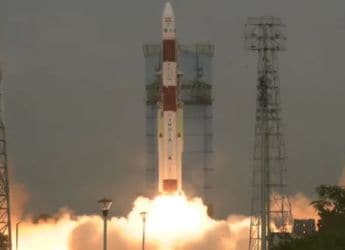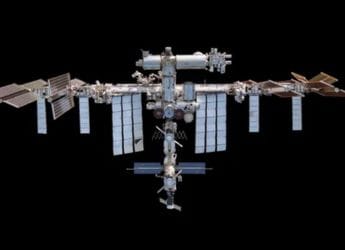- Home
- Science
- Science News
- NASA James Webb Space Telescope Unearths Oversupply of UV Light from Early Stars and Black Holes
NASA James Webb Space Telescope Unearths Oversupply of UV Light from Early Stars and Black Holes
James Webb Space Telescope's new discovery challenges established theories of cosmic reionization.

Photo Credit: Unsplash/NASA
James Webb Space Telescope found excess UV light from early stars and giant black holes
In a breakthrough discovery, NASA's James Webb Space Telescope (JWST) has revealed unexpected details about the universe's reionization period. The early universe, which underwent significant changes following the Big Bang, was thought to have been gradually illuminated by the first stars and galaxies. Recent observations, however, suggest that the universe's reionization involved a surprising overabundance of ultraviolet (UV) light. This revelation, as reported by Pratika Dayal, an astrophysicist at the University of Groningen, indicates a much higher level of UV radiation than previously anticipated.
Surprising Overproduction of UV Light
The JWST has uncovered more than 1000 candidate galaxies from the first billion years after the Big Bang. Astrophysicist Brant Robertson from the University of California, Santa Cruz, highlights that these findings challenge previous understandings of cosmic reionization. The high levels of UV light detected, which seemed excessive, are leading to a re-evaluation of the timeline and processes involved in reionizing the universe. This includes assessing whether the abundance of UV light is due to small galaxies or active galactic nuclei (AGNs).
Debate Over Reionization Sources
Until recently, astronomers relied on data from the Cosmic Microwave Background (CMB) and quasar observations to estimate when reionization occurred. The CMB indicated that reionization began around 700 million years after the Big Bang. However, the abundance of UV light observed by JWST suggests reionization may have started earlier or proceeded more rapidly. Julian Muñoz from the University of Texas at Austin and his colleagues argue that the excess UV light might indicate flaws in previous assumptions about reionization.
Ongoing Re-evaluation of Theories
The new data from JWST has prompted scientists to reconsider how both small galaxies and AGNs contributed to reionization. While some experts believe AGNs might play a significant role, others like Rohan Naidu from MIT suggest that the findings indicate a need for a broader reassessment of cosmic reionization theories. This ongoing research underscores the complex nature of the early universe and highlights the need for continued exploration.
Catch the latest from the Consumer Electronics Show on Gadgets 360, at our CES 2026 hub.
Related Stories
- Samsung Galaxy Unpacked 2025
- ChatGPT
- Redmi Note 14 Pro+
- iPhone 16
- Apple Vision Pro
- Oneplus 12
- OnePlus Nord CE 3 Lite 5G
- iPhone 13
- Xiaomi 14 Pro
- Oppo Find N3
- Tecno Spark Go (2023)
- Realme V30
- Best Phones Under 25000
- Samsung Galaxy S24 Series
- Cryptocurrency
- iQoo 12
- Samsung Galaxy S24 Ultra
- Giottus
- Samsung Galaxy Z Flip 5
- Apple 'Scary Fast'
- Housefull 5
- GoPro Hero 12 Black Review
- Invincible Season 2
- JioGlass
- HD Ready TV
- Laptop Under 50000
- Smartwatch Under 10000
- Latest Mobile Phones
- Compare Phones
- Vivo Y500i
- OnePlus Turbo 6V
- OnePlus Turbo 6
- Itel Zeno 20 Max
- OPPO Reno 15 Pro Mini 5G
- Poco M8 Pro 5G
- Motorola Signature
- Vivo Y50e 5G
- Lenovo Yoga Slim 7x (2025)
- Lenovo Yoga Slim 7a
- Realme Pad 3
- OPPO Pad Air 5
- Xiaomi Watch 5
- Huawei Watch 10th Anniversary Edition
- Acerpure Nitro Z Series 100-inch QLED TV
- Samsung 43 Inch LED Ultra HD (4K) Smart TV (UA43UE81AFULXL)
- Asus ROG Ally
- Nintendo Switch Lite
- Haier 1.6 Ton 5 Star Inverter Split AC (HSU19G-MZAID5BN-INV)
- Haier 1.6 Ton 5 Star Inverter Split AC (HSU19G-MZAIM5BN-INV)

















